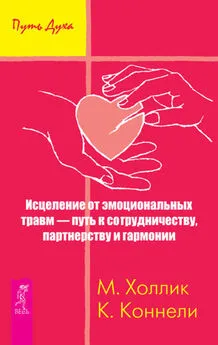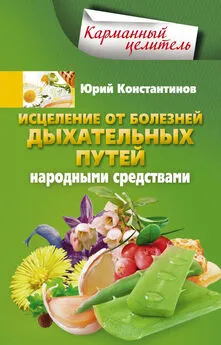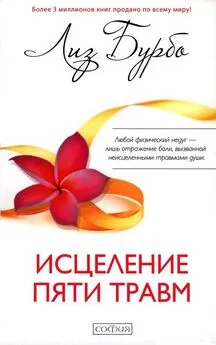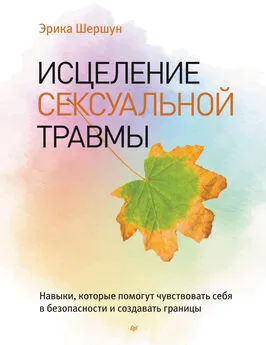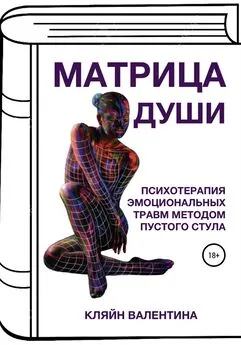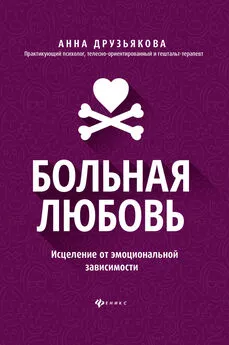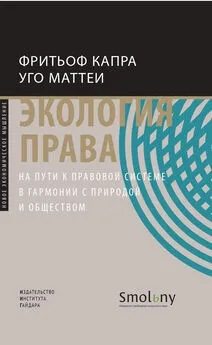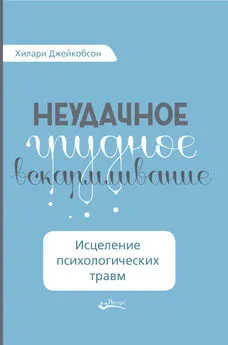Кристин Коннелли - Исцеление от эмоциональных травм – путь к сотрудничеству, партнерству и гармонии
- Название:Исцеление от эмоциональных травм – путь к сотрудничеству, партнерству и гармонии
- Автор:
- Жанр:
- Издательство:Array Литагент «Весь»
- Год:2012
- Город:Санкт-Петербург
- ISBN:978-5-9573-2380-8
- Рейтинг:
- Избранное:Добавить в избранное
-
Отзывы:
-
Ваша оценка:
Кристин Коннелли - Исцеление от эмоциональных травм – путь к сотрудничеству, партнерству и гармонии краткое содержание
Для того чтобы ответить на эти вопросы, М. Холлик и К. Коннелли провели серьезную исследовательскую работу, благодаря которой пришли к выводу, что все войны и катастрофы имеют первопричину, скрытую в человеческой природе, – психологические травмы, имеющиеся у каждого человека.
Авторы уверены: жить в мире и гармонии может любой, если исцелится от внутренней боли, – и рассказывают, как это сделать. Они рассматривают различные способы, начиная от древних индейских ритуалов и заканчивая современными психологическими техниками, и предлагают читателю авторскую методику, которая поспособствует не только личному исцелению, но и повороту хода в истории!
Исцеление от эмоциональных травм – путь к сотрудничеству, партнерству и гармонии - читать онлайн бесплатно ознакомительный отрывок
Интервал:
Закладка:
Eisler R., The Power of Partnership. California: New World Library, 2002.
Eisler R., The Real Wealth of Nations: Creating a caring economics. San Francisco: Berrett-Koehler, 2007.
Ellwood W., This toxic life // New Internationalist (415): 4–7, 2008.
Fehr E. and Fischbacher U., The Nature of Human Altruism // Nature 425: 785–791, 2003.
Fisher R. and Ury W., Getting to Yes: Negotiation an agreement without giving in. 2nd ed. London: Random House, 1991.
Fox J., Poetic Medicine: A kind of magic. Shift (20): 15–19, 2008.
Fry D. P., The Human Potential for Peace: An anthropological challenge to assumptions about war and violence. Oxford: Oxford University Press, 2006.
Gardner H., Frames of Mind: The theory of multiple intelligences. 2nd ed: Fontana, 1993.
Gaskin I. M., Spiritual Midwifery. 4th ed: Book Publishing Company, 2002.
Geddes L., Are successful traders born not made? // New Scientist 201 (2691): 11, 2009.
Geddes L., Sedatives may slow trauma recovery // New Scientist 204 (2728): 12, 2009a.
Gendlin E. T., Focusing: How to gain direct access to your body’s knowledge. Rev. ed. London: Rider, 2003.
Gerhardt S., Why Love Matters: How affection shapes a baby’s brain. NY: Routledge, 2004.
Gilbert R., Widom C. S., Browne K., Fergusson D., Webb E. and Janson S., Burden and consequences of child maltreatment in high-income countries // The Lancet 373 (9657): 68–81, 2009.
Gilbert S. E., Developmental Biology. 6th ed. Sunderland: Sinauer Associates, 2000.
Glover V ., Fetal and Neonatal Stress Research Group 2005 // http://www1.imperial. ac.uk/medicine/research/researchthemes/reprodscience/fetalstressgroup/.
Goleman D., Emotional Intelligence: Why it can matter more than IQ. London: Bloomsbury Publishing, 1995.
Gopnik A ., The Philosophical Baby: What children’s minds tell us about truth, love & the meaning of life. London: The Bodley Head, 2009.
Gorski L., Sweet M. and Sehring, In Touch: The foundation of experience, edited by K. E. Barnard and T. B. Brazelton, 1990.
Gosline A., Nipping teen crime in the bud // New Scientist (2651): 38–41, 2008.
Gosline A., The five ages of the brain: 3. Adolescence: Wired, and rewiring // New Scientist 202 (2702): 28–30, 2009.
Grieg J., Suicide psychology // New Scientist 201 (2701): 24, 2009.
Grof S., The Holotropic Mind. San Francisco: Harper Collins, 1990.
Grof S. and Grof С., eds., Spiritual Emergency: When personal transformation becomes a crisis. Los Angeles: Jeremy P. Tarcher, 1989.
Harlow H., Love in infant monkeys // Scientific American 200 (6): 68, 1959.
Harms L., Understanding Human Development: A multidimensional approach. Melbourne: Oxford University Press, 2005.
Heider J., The Tao of Leadership. Atlanta: Humanics New Age, 1985.
Henderson M., Imprint of famine seen in genes of Second World War babies 60 years on // Times Online, 28 October 2008.
Highfield R., In your face // New Scientist 201 (2695):29–32, 2009.
Hollick M., The Science of Oneness: A worldview for the twentyfirst century. Ropley: O Books, 2006.
Hollick M. and Connelly С ., Sustainable Communities: Lessons from aspiring eco-villages. Perth, Australia: Praxis Education, 2008.
Horgan J., The End of War // New Scientist 203 (2715): 38–41, 2009.
Ingerman S., Soul Retrieval: Mending the Fragmented Self. San Francisco: HarperCollins, 1991.
Kaplan M., Why bonobos make love, not war, 30 Nov 2006 // http://www. newscientist.com/article.ns?id=mg19225801.900.
Katie B., Loving What Is: Four questions that can change your life. London: Rider, 2002.
Kornfield J., A Path with Heart: A guide through the perils and promises of spiritual life. New York: Bantam Books, 1993.
Kornfield J., Even the Best Meditators Have Old Wounds to Heal: Combining meditation and psychotherapy. In Paths Beyond Ego, edited by R. Walsh and F. Vaughan. New York: Putnam, 1993a.
Landau E., PTSD Linked to Higher Post-Surgery Death Rate // http://edition. cnn.com/2009/HEALTH/10/20/ptsd.veterans.mortality/index.html?eref=igoogle_cnn, 2009.
Lerro B., Power in Eden: The emergence of gender hierarchies in the ancient world Trafford Books, 2005.
Levine P. A., Healing Trauma. Boulder: Sounds True, 2008.
Levine P. A. and Frederick А., Waking the Tiger: Healing Trauma. Berkeley: North Atlantic Books, 1997.
Lindner E. G., Making Enemies: Humiliation and International Conflict. Santa Barbara: Praeger, 2006.
Lipton B. H., The Biology of Belief: Unleashing the power of consciousness, matter, and miracles. Santa Rosa: Mountain of Love, 2005.
Loftus E. F. and Pickrell J. E., The Formation of False Memories // Psychiatric Annals 25: 720–725, 1995.
MacLean P. D., Triune Conception of the Brain and Behaviour. Toronto: University of Toronto Press, 1974.
MacMillan H. L., Wathen C. N., Barlow J., Fergusson D. M., Leventhal J. M. and Taussig H. N ., Interventions to prevent child maltreatment and associated impairment // The Lancet 373 (9657): 250–266, 2009.
Macy J., The Way to the Forest. Western Australia: The Gaia Foundation, 1995.
Malaspina, D., Corcoran C., Kleinhaus K. R., Perrin M. C., Fennig S., Nahon D., Friedlander Y. and Harlap S., Acute maternal stress in pregnancy and schizophrenia in offspring: A cohort prospective study. BMC Psychiatry 8, 2008.
Marchant J., Cell suicide is behind prenatal brain damage // New Scientist (2435), 2004.
Matthews R ., Opposites Detract // New Scientist: 39–41, 2004.
McAnarney E. B ., Adolescents and Touch. In Touch: The foundation of experience, edited by K. E. Barnard and T. B. Brazelton, 2004.
McFetridge G., Peak States of Consciousness: Theory and Applications. Vol. 1: Breakthrough techniques for exceptional quality of life. Hornby Island: Institute for the Study of Peak States Press, 2004.
McFetridge G., Peak States of Consciousness: Theory and Applications. Vol. 2: Acquiring Extraordinary Spiritual and Shamanic States. Hornby Island: Institute for the Study of Peak States Press, 2008.
McGilvray A., Researchers map human epigenome // Australian Broadcasting Commission, 15 October 2009.
Mental Health Foundation. 2009. Statistics on Mental Health 2009 // http://www. mentalhealth.org.uk/information/mental-healthoverview/statistics/#howmany.
Mindell A., Sitting in the Fire. Portland: Lao Tse Press, 1995.
Mithen S., The Prehistory of the Mind: A search for the origins of art, religion and science. London: Thames & Hudson, 1996.
Mithen S., After the Ice: A Global Human History 20,000–5,000 BC. London: Weidenfeld & Nicholson, 2003.
Montagu A, ed. Learning Non-Aggression: The experience of non-literate societies. Oxford: Oxford University Press, 1978.
Motluk A., Can Experiences before Conception be Passed on? // New Scientist 201 (2694): 12, 2009.
Mussen P. and Eisenberg-Berg N., Roots of Caring, Sharing and Helping: The Development of Prosocial Behaviour in Children. San Francisco: W. H. Freeman, 1977.
National Institute of Mental Health. 2008. The Numbers Count: Mental Disorders in America // http://www.nimh.nih.gov/health/publications/the-numberscount-mental-disorders-in-america/index.shtml.
Neugebauer R ., Accumulating Evidence for Prenatal Nutritional Origins of Mental Disorders // J. Am. Med. Assoc. 294 (5):621–623, 2005.
Nicholls H., Taming the Beast // New Scientist 204 (2728):40–43, 2009.
Nowak R., The e-Doctor will see you now // New Scientist 200 (2681): 24–25, 2008.
Oatley K., Keltner D. and Jenkins J. M., Understanding Emotions. 2nd ed. Oxford: Blackwell, 2006.
Olshansky B. and Dossey L., Retroactive Prayer: An Outrageous Hypothesis? // Network: The Scientific and Medical Network Review (84): 3–11, 2004.
Orbach S., The Unstable Body // New Scientist 201 (2694): 28–29, 2009.
Orme-Johnson D. W., Preventing Crime Through the Maharishi Effect. J Offender Rehabilitation 36 (1–4), 2003.
Orme-Johnson D. W., Dillbeck M. C. and Alexander C. N., Preventing Terrorism and International Conflict: Effects of Large Assemblies of Participants in the Transcendental Meditation and TM-Sidhi Programs. J Offender Rehabilitation 36 (1–4), 2003.
Pariante C. M., Depression, Stress and the Adrenal Axis: British Society for Neuroendocrinology, 2003.
Perry B. D., An Interview with Bruce D. Perry by Lou Bank // http://www. childtrauma.org/CTAMATERIALS/loubank.asp, 1996.
Perry B. D., Incubated in Terror: Neurodevelopmental Factors in the “Cycle of Violence” / Children in Violent Society, edited by J. D. Osofsky, 1997.
Perry B. D., Memories of Fear: How the brain stores and retrieves physiologic states, feelings, behaviors and thoughts from traumatic events / Splintered Reflections: Images of the body in trauma, edited by J. Goodwin and R. Attias. NY: Basic Books, 1999.
Perry B. D., Trauma and Terror in Childhood: The Neuropsychiatric Impact of Childhood Trauma / Handbook of Psychological Injuries: Evaluation, Treatment and Compensable Damages, edited by I. Schulz, S. Carella and D. O. Brady: American Bar Association Publishing, 2000.
Perry B. D., Bonding and Attachment in Maltreated Children: Consequences of Emotional Neglect / Childhood: Child Trauma Academy, 2001.
Perry B. D., Brain Structure and Function II: Special Topics Informing Work with Maltreated Children / Interdisciplinary Education Series, edited by B. D. Perry: ChildTrauma Academy, 2002a.
Perry B. D., Childhood Experience and the Expression of Genetic Potential: What childhood neglect tells us about nature and nurture // Brain and Mind 3: 79–100, 2002b.
Perry J. W., The Far Side of Madness. Englewood Cliffs. NJ: Prentice-Hall, 1974.
Pert C. B., Molecules of Emotion: Why you feel the way you feel. NY: Simon & Schuster, 1997.
Powell D., Treat a female rat like a male and its brain changes // New Scientist 201 (2690):8, 2009.
Ratnavale D., An Understanding of Aboriginal Experience in the context of Collective Trauma: A challenge for healing: Aboriginal and Torres Islander Mental Health Services, 2007.
Rausch P., In Touch: The foundation of experience, edited by K. E. Barnard and T. B. Brazelton, 1990.
Reading R., Bissell S., Goldhagen J., Harwin J., Masson J., Moynihan S., Parton N., Pais M. S., Thoburn J. and Webb E., Promotion of Children’s Rights and Prevention of Child Maltreatment // The Lancet 373: 332–343, 2009.
Rhodes R., Why they Kill: The discoveries of a maverick criminologist. NY: Vintage Books, 2000.
Rinpoche Sogyal , The Tibetan Book of Living and Dying. London: Rider, 1992.
Robben A. C. G. M. and Suarez-Orozco M. M., eds. Cultures Under Siege: Collective Violence and Trauma, Publications of the Society for Psychological Anthropology. NY: Cambridge University Press, 2000.
Roberts N., The Holocene: an environmental history. 2nd ed. Oxford: Blackwell, 1998.
Robson D., Disorderly Genius // New Scientist 202 (2714):34–37, 2009a.
Читать дальшеИнтервал:
Закладка:
